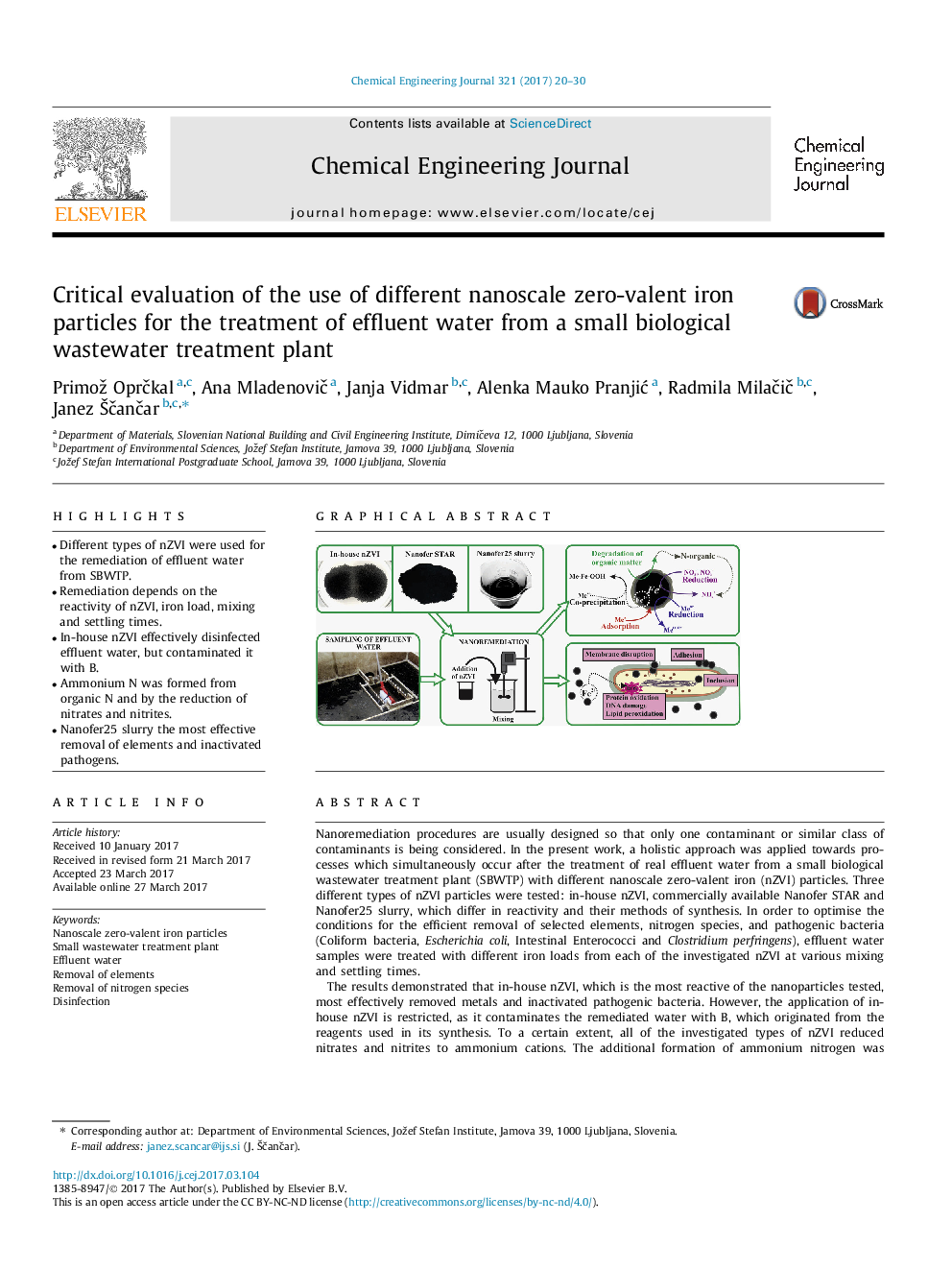| کد مقاله | کد نشریه | سال انتشار | مقاله انگلیسی | نسخه تمام متن |
|---|---|---|---|---|
| 6465781 | 1422957 | 2017 | 11 صفحه PDF | دانلود رایگان |
- Different types of nZVI were used for the remediation of effluent water from SBWTP.
- Remediation depends on the reactivity of nZVI, iron load, mixing and settling times.
- In-house nZVI effectively disinfected effluent water, but contaminated it with B.
- Ammonium N was formed from organic N and by the reduction of nitrates and nitrites.
- Nanofer25 slurry the most effective removal of elements and inactivated pathogens.
Nanoremediation procedures are usually designed so that only one contaminant or similar class of contaminants is being considered. In the present work, a holistic approach was applied towards processes which simultaneously occur after the treatment of real effluent water from a small biological wastewater treatment plant (SBWTP) with different nanoscale zero-valent iron (nZVI) particles. Three different types of nZVI particles were tested: in-house nZVI, commercially available Nanofer STAR and Nanofer25 slurry, which differ in reactivity and their methods of synthesis. In order to optimise the conditions for the efficient removal of selected elements, nitrogen species, and pathogenic bacteria (Coliform bacteria, Escherichia coli, Intestinal Enterococci and Clostridium perfringens), effluent water samples were treated with different iron loads from each of the investigated nZVI at various mixing and settling times.The results demonstrated that in-house nZVI, which is the most reactive of the nanoparticles tested, most effectively removed metals and inactivated pathogenic bacteria. However, the application of in-house nZVI is restricted, as it contaminates the remediated water with B, which originated from the reagents used in its synthesis. To a certain extent, all of the investigated types of nZVI reduced nitrates and nitrites to ammonium cations. The additional formation of ammonium nitrogen was the result of the interactions of the nZVI with the organic nitrogen present in the effluent water. At an optimised iron load, mixing time, and settling time, the most efficient removal of elements and disinfection of pathogens was achieved when Nanofer25 slurry was applied.
299
Journal: Chemical Engineering Journal - Volume 321, 1 August 2017, Pages 20-30
